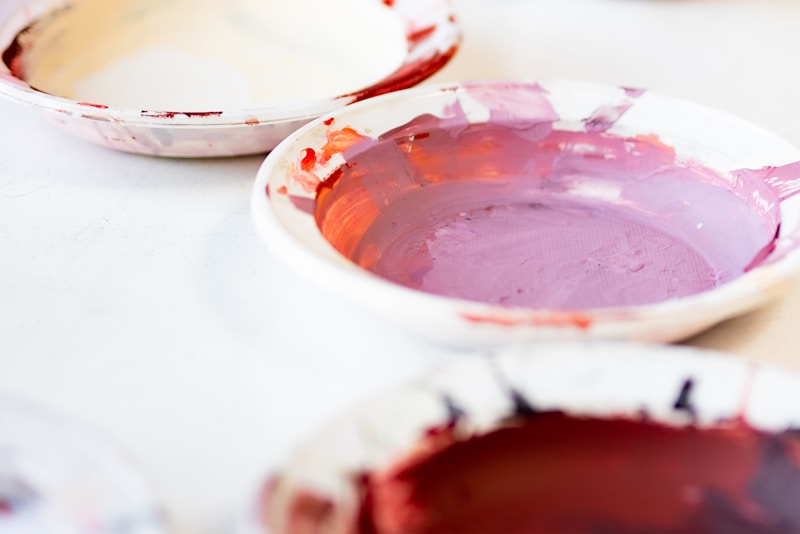Exploring Artistic and Creative Motivations: The Inner Drive That Fuels Creativity
Understanding Artistic and Creative Motivations
Art has always been a profound reflection of human emotions, experiences, and perceptions. The motivations that drive artists to create are diverse and intricate, often stemming from a combination of personal, social, and cultural influences. In this article, we delve into the various facets of artistic and creative motivations, exploring what inspires artists and how these motivations manifest in their work.
What Are Artistic and Creative Motivations?
Artistic and creative motivations refer to the internal and external factors that inspire individuals to engage in artistic endeavors. These may include personal experiences, emotional states, social influences, and even cognitive processes. Understanding these motivations can provide valuable insights into the creative process and the resulting artworks.
Types of Artistic and Creative Motivations
The motivations behind artistic expression can be broadly categorized into several types:
| Personal Motivation | Driven by individual experiences, emotions, or thoughts. Artists may create as a form of self-expression or catharsis. |
| Social Motivation | Influenced by societal issues, cultural narratives, or communal experiences. This type often reflects the artist's engagement with their environment or audience. |
| Commercial Motivation | Aimed at achieving commercial success or recognition. Many artists produce work with the intent of selling or gaining popularity. |
| Philosophical Motivation | Guided by theoretical ideas, moral beliefs, or aesthetic principles. Artists may seek to challenge perceptions or provoke thought through their work. |
Influences on Artistic Motivation
Artistic motivations do not exist in a vacuum; they are shaped by various influences. Here are some of the key factors that can inspire an artist's creativity:
1. Personal Experiences
Personal experiences play a crucial role in shaping the motivations of artists. Whether it’s a significant life event, emotional struggles, or joyful moments, these experiences serve as fuel for creativity. Artists often translate their emotions into visual languages, resulting in profound and relatable artworks.
2. Cultural Context
The culture in which an artist exists can heavily influence their work. Artists often draw from their cultural heritage, traditions, and social issues that they observe within their communities. This shared cultural context can inspire themes, styles, and narratives within their art.
3. Education and Training
The formal education and training an artist receives can also impact their motivations. Interacting with mentors, peers, and exposure to various artistic styles and techniques can encourage experimentation and innovation. There are also many creative programs and workshops that can spark new ideas and motivations within aspiring artists.
4. External Recognition
The desire for recognition can be a significant motivator for many artists. The art world often values achievement and acclaim, pushing artists to create work that not only fulfills their instincts but also resonates with audiences and critics alike. This dynamic can sometimes lead to a tension between commercial appeal and personal expression.

The Psychological Aspects of Creativity
Psychology plays an essential role in understanding artistic and creative motivations. Different psychological theories can provide insight into why individuals engage in creative activities:
1. Maslow's Hierarchy of Needs
Maslow’s Hierarchy of Needs posits that individuals are motivated by a series of needs ranging from basic physiological requirements to self-actualization. Once basic needs are met, individuals often seek self-expression and fulfillment through art, aligning with the need for creativity and unique expression.
2. Flow Theory
Flow theory, developed by psychologist Mihaly Csikszentmihalyi, suggests that individuals enter a state of flow when they are deeply immersed in an activity. This state happens when the challenge of the task aligns with the artist's skill level, creating an optimal experience that often leads to sustained motivation and creativity.
3. Intrinsic vs. Extrinsic Motivation
Understanding the distinction between intrinsic and extrinsic motivation can help in recognizing the driving forces behind artistic endeavors. Intrinsic motivation comes from within—artists create for the joy and satisfaction of the process itself. Extrinsic motivation, on the other hand, may involve producing art for external rewards such as money or recognition.
Creative Processes and Their Motivational Roots
The path from inspiration to completion is often complex and varied among artists. Let’s explore how these motivations fuel different creative processes:
1. Ideation and Concept Development
Artists generally start with an idea or concept, which may originate from personal experiences, cultural inspirations, or societal observations. During this phase, motivations are crucial for idea generation. Engaging in brainstorming sessions and gathering references can further stimulate creativity.
2. Experimentation with Mediums
The choice of medium can be driven by artistic motivation. Some artists might feel compelled to work with specific materials or techniques that resonate with their ideas or emotions. Experimenting with different mediums can also lead to unexpected results, enriching the creative process.
3. Iterative Refinement
Once a piece begins to take shape, the motivation to refine and enhance the artwork often follows. Whether through sketching, drafting, or digitally refining a piece, artists invest time and effort into creating a polished final product. This process may reflect personal ambitions, artistic standards, or audience expectations.
Conclusion
Understanding artistic and creative motivations is essential not only for artists but also for art enthusiasts, educators, and the general public. By acknowledging the diverse factors that inspire creativity, we can cultivate a deeper appreciation for art and the creative processes behind it.
If you are an artist, take time to reflect on your motivations and what drives your creativity. Experiment with new mediums, connect with other creatives, and consider how your experiences shape your art. If you are someone who enjoys art, engaging with artists about their motivations can lead to richer discussions and a better understanding of the works you admire.
Remember, artistic motivation is not a fixed state; it can evolve and change with time, experiences, and influences. Embrace this journey of discovery, and let your creativity flourish.